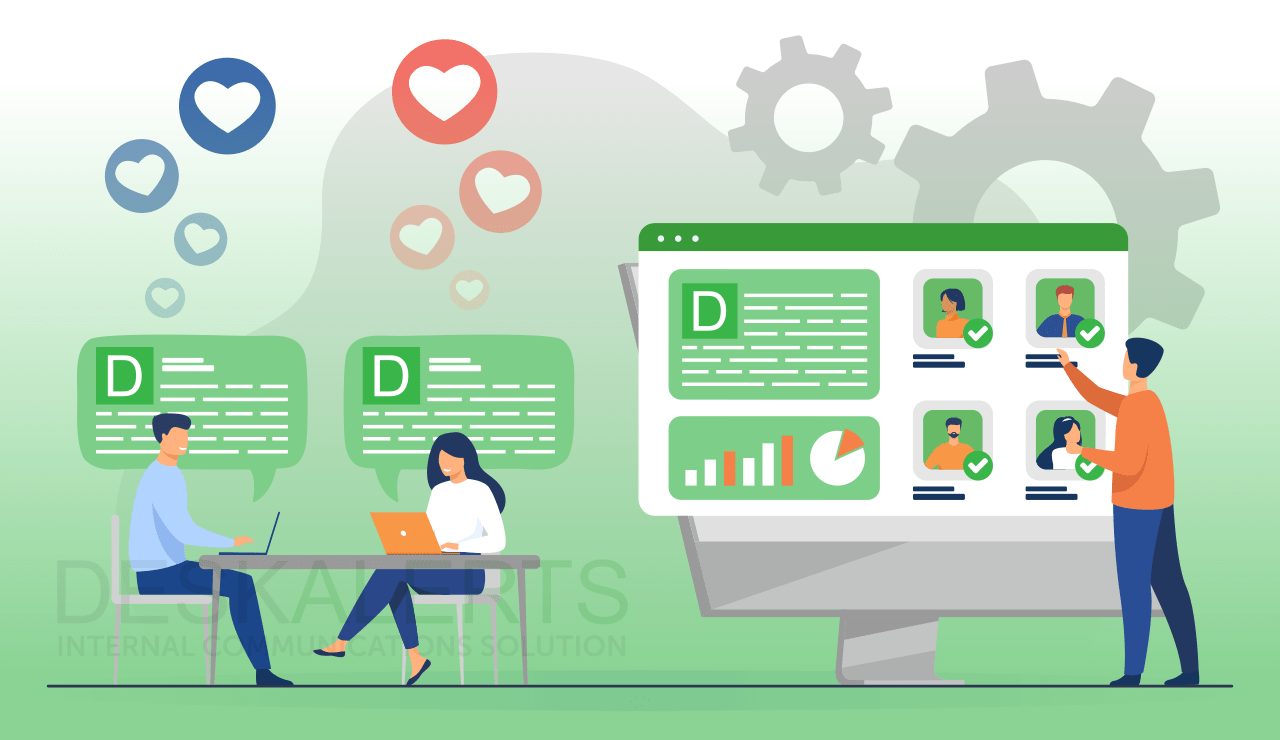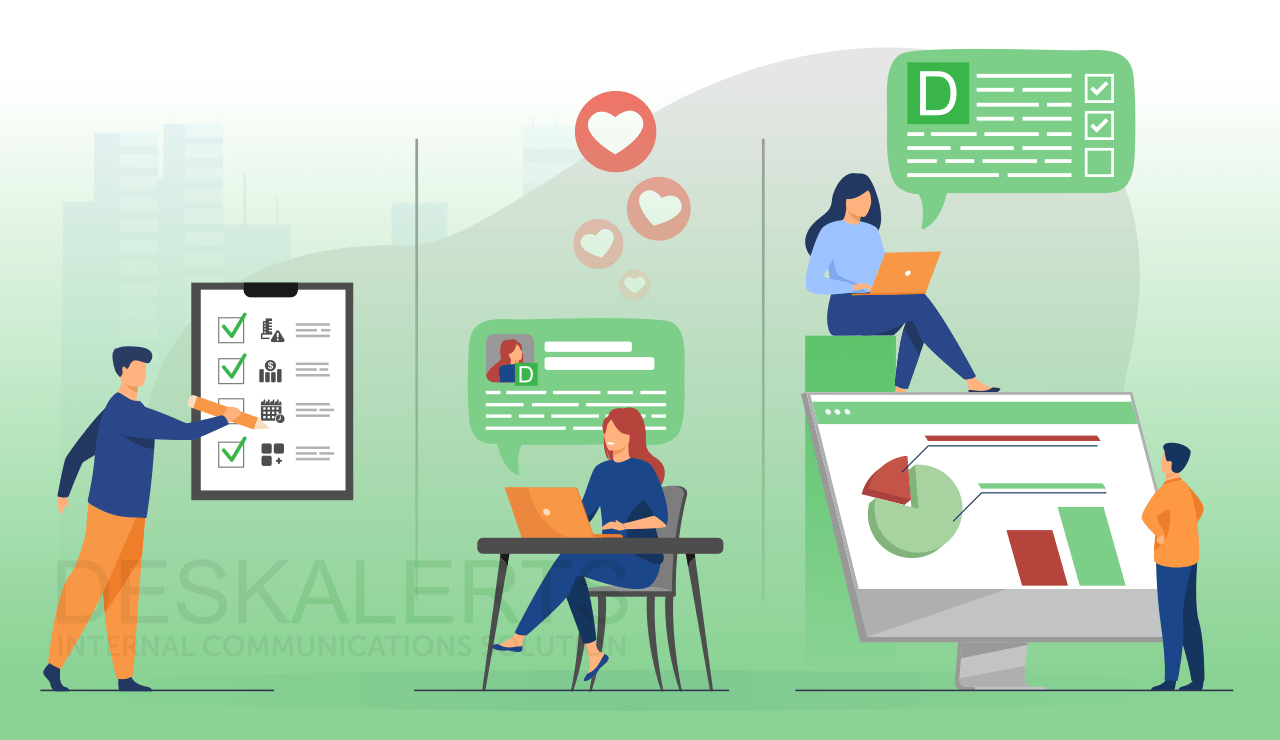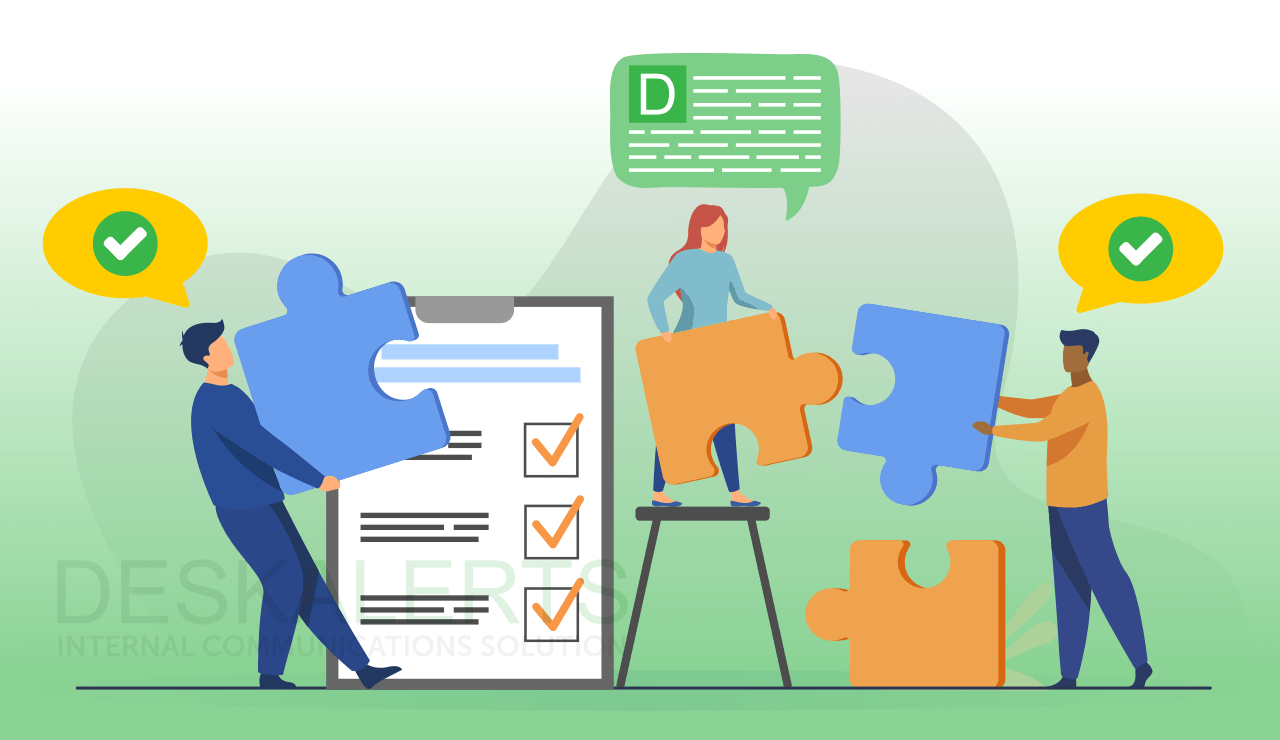
When your employees are engaged, they’ll work hard to achieve the company’s goals. Your engaged employees help to establish a positive and thriving company culture that makes your organization a great place to work. This, in turn, drives productivity and profitability, enables you to attract and retain the best talent in your industry, and has lower absenteeism and presenteeism rates.
However, attaining this can be a challenge. Many employees just don’t feel engaged with their employer.
Gallup’s global State of the Workplace study revealed that 85% of employees say they feel disengaged in their workplaces.
And research from the Engagement Institute shows that the cost to the economy of employees who aren’t engaged is around $450 to $550 billion every year.
Importance of good employee engagement communication
Good communication has a pivotal role to play in improving workplace engagement. When you communicate regularly with employees, you help build a trust culture and break down information silos.
Communication ensures that all employees understand the organization’s business objectives and goals and their role in making the business a success.
Without it, employees can feel as though they are operating in the dark. Rumors and misinformation can circulate and derail the company’s success.
Having good systems in place to ensure you are regularly communicating with employees in a clear, easy to understand manner is key to boosting engagement within your organization.
A great staff engagement tool to deploy in your organization is DeskAlerts - an internal communications system that uses various channels to provide timely and relevant information to your employees. You can send messages to the entire organization or different audiences, and the system will work on practically any computer, smartphone or tablet device.
DeskAlerts features for employee engagement communication include:
- Desktop pop-up alerts
- Email notifications
- Corporate wallpapers
- Corporate screensavers
- Digital signage
- Video messages
- Mobile notifications
- Surveys, polls and quizzes
- An RSVP function
- Scrolling ticker
Solving common employee engagement communication issues
Even if you commit to improving employee engagement communication, there can be many obstacles in the way that could hamper your efforts.
DeskAlerts now offers a variety of staff engagement tools to help overcome these specific challenges.
Our new staff engagement tools pack has been designed to enhance the employee’s experience by providing them control over the content they can choose to receive as well as the ability to provide feedback to the content creator.
These features help to give greater insights into the effectiveness of the communications material that employees have received.
Common communications problems to solve with the new tools:
1. Reducing information overload
While not communicating enough with employees is inherently problematic, communicating too much can cause issues as well.
A study by the University of Southern California found that the average employee consumes the equivalent of around 174 newspapers a day in information from a variety of sources at work (emails, intranet, social media, meetings, webinars, etc.)
This means that important information can get lost in the sea of employee engagement communications and can be missed or not given the attention it deserves.
DeskAlerts allows you to cut through all this digital noise by sending important communications straight to employees’ screens where they will get attention.
It also now enables employees to have more control over the information they receive. They can self-select to receive information on relevant topics and their role, meaning they will get tailored information, and irrelevant information will be filtered out.
2. Overcoming distractions
Distractions in the workplace are a major source of frustration for many people.
Studies have found that, on average, a worker is distracted every 11 minutes, and then it takes around 25 minutes to refocus once the distraction has passed.
One of the problems with information overload (mentioned above) is that it can create many distractions in the workplace. When people feel they are drowning in notifications, they can become stressed and react negatively to incoming communications.
The content subscriptions feature in DeskAlerts allows you to create types of content that employees voluntarily subscribe to.
You can then deliver non-urgent communications through desktop alerting channels without the risk of overloading people with information that isn’t relevant to them.
3. Lack of feedback
A lot of time and effort goes into producing employee engagement communication content for employees… but if they don’t like the content you make, you run the risk of them ‘tuning out’ whenever they receive new messages.
How do you know if the internal communications material you’ve created has hit the mark? Is it interesting for employees? Is it informative? Is it relevant? Did they understand it? You can’t improve something if you can’t measure it. Analytics that show how many views or click-through you’ve had on an item of content won’t give you that extra layer of data.
With our user reaction function, you can now have oversight about what messages employees found useful.
The feature is borrowed from the “like” function people are familiar with on social media. Feedback can be used to continuously improve the content that is delivered.
4. Lack of personalization
Operating with a one-size-fits-all approach to internal communication is outdated and doesn’t keep pace with the end user’s expectations and preferences. We live in a very switched on digital world where people are used to engaging with information channels in a personalized way.
Not only is it important to create customized content to keep up with this expectation, but you need to consider different delivery channels based on personal preference.
>> Learn more about the importance of audience segmentation in internal communications. <<
With DeskAlerts, you can create content for different audiences - even for individual users. This function is even more powerful with our personalized alerts feature. Alerts can be sent containing “tokens” that are replaced by different values depending on the recipient.
This allows you to address each recipient by name or to provide a slightly different version of a message for every end-user or group of users (for example, people from one department).

About the DeskAlerts staff engagement tools pack
When you subscribe to DeskAlerts, you can add on our new staff engagement tools pack specifically to boost employee engagement through your internal communications activities.
The pack contains the following features:
1. Opt-in alerts
Opt-in alerts allow the recipient to express their desire to participate in something and automatically adds them to a group that is specified by the content creator.
This allows you to automate your audience segmentation and create follow-up communication - even before you receive responses from the original message.
For example, if you ask your employees if they are interested in attending a particular event, you can send the agenda details to only those who indicate an interest. Or you could ask employees about recent travel history and health symptoms and follow up with recommendations to stay home and isolate if they meet the requisite criteria.
How to use opt-in alerts: Use this function to allow users to opt in to certain information topics, confirm attendance at corporate events, state their preferred communication methods or to receive guidance and assistance on issues they find challenging.
2. Content subscriptions
The content subscriptions feature is a mechanism that lets content creators outline the topics or types of communication that employees can voluntarily subscribe to receive. This enables you to deliver less urgent communications through channels that appear in a way that will reduce information overload.
How to use content subscriptions: Use it to give control over the types of content your employees want to receive: newsletters, IT department information, industry updates, etc. A system administrator can also set up a one-click unsubscribe disclaimer message that will automatically be added to all alerts sent to content subscribers.
3. User reactions
The user reactions function is added to all content that you create and send and lets you gauge whether or not the end-user found it useful (by ‘liking’ the message). Thus you bring “the power of likes” into your internal communication process.
How to use user reactions: You can see in real-time whether or not your content has hit the mark by looking at whether it has attracted favorable reactions from your employees. This data will allow you to learn and improve on your content.
4. Personalized alerts
The ability to create content that contains tokens that will be replaced by different values for different end-users, which means it will be perceived better by the recipient. Out of the box, the alert may include the recipient’s name or email. However, extra personalization tokens (i.g. job position) can also be uploaded by the content creator through a spreadsheet file.
How to use alerts personalization: You can easily insert the recipient’s name or personal details in the body of a message to make it unique for each end-user (or group of users). For example, you can send the information about the duty time to the specific worker.
***
Improving internal communications with a staff engagement tool will help you to have a more cohesive, successful workplace. When your employees are more engaged, they’re more likely to go the extra mile for the company, ensuring its success.
 Caroline Duncan
Caroline Duncan








